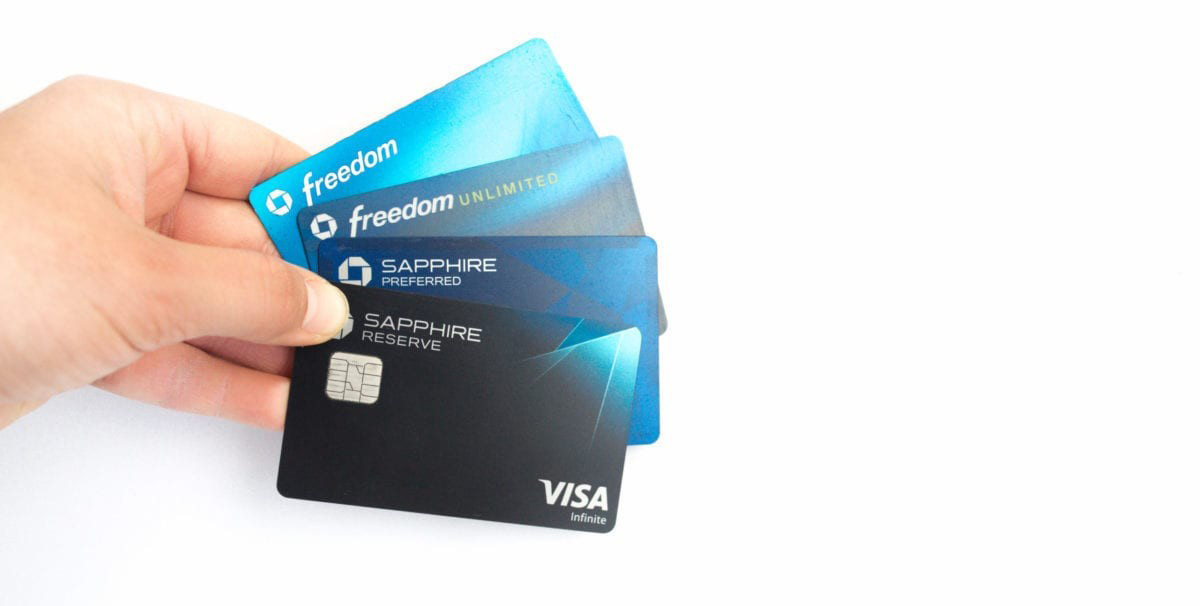

Finance
How To Cosign For A Credit Card Online
Published: October 27, 2023
Learn how to co-sign for a credit card online and manage your finances effectively. Get expert tips and guidance to navigate the co-signing process.
(Many of the links in this article redirect to a specific reviewed product. Your purchase of these products through affiliate links helps to generate commission for LiveWell, at no extra cost. Learn more)
Table of Contents
- Introduction
- Understanding Cosigning for a Credit Card
- Benefits and Risks of Cosigning for a Credit Card
- How to Find a Suitable Credit Card for Cosigning
- Step-by-Step Guide to Cosigning for a Credit Card Online
- Factors to Consider Before Cosigning for a Credit Card
- Alternatives to Cosigning for a Credit Card
- Tips for Building Credit as a Cosigner
- Conclusion
Introduction
When it comes to building credit, having a credit card is often a necessary tool. However, if you have a limited credit history or a low credit score, getting approved for a credit card can be challenging. This is where cosigning for a credit card can come into play.
Cosigning for a credit card involves having someone with a strong credit history and score, such as a parent, sibling, or close friend, apply for a credit card on your behalf. By adding you as an authorized user or cosigner, the credit card company takes into account the cosigner’s creditworthiness, making it easier for you to be approved.
While cosigning for a credit card can be a helpful solution to establish credit or improve your credit score, there are both benefits and risks to consider. In this article, we will explore the ins and outs of cosigning for a credit card online, including how to find a suitable credit card, the step-by-step process, and factors to consider before making this financial decision.
Additionally, we will discuss alternative options to cosigning for a credit card and provide tips for building credit as a cosigner. By understanding the ins and outs of cosigning for a credit card, you can make an informed decision that aligns with your financial goals and circumstances.
Understanding Cosigning for a Credit Card
Cosigning for a credit card is an arrangement where someone with a strong credit history agrees to be jointly responsible for the credit card debt alongside the primary cardholder. The cosigner’s credit history and credit score are taken into consideration when the credit card application is reviewed, which can increase the chances of approval for the primary cardholder.
By cosigning, the cosigner essentially guarantees the repayment of the credit card debt. This means that if the primary cardholder is unable to make the required payments, the cosigner will be held responsible and may have to make the payments on their behalf. Cosigning can be a way to help someone establish or rebuild their credit history and gain access to credit opportunities that they may not otherwise qualify for on their own.
However, it’s important to understand that cosigning for a credit card should not be taken lightly. It is a significant financial responsibility that should be thoroughly considered before making a decision.
Some key points to understand about cosigning for a credit card include:
- Joint Responsibility: As a cosigner, you are equally responsible for the credit card debt. This means that any late payments, missed payments, or defaults will appear on both the primary cardholder’s and the cosigner’s credit reports.
- Credit Impact: The credit card activity, whether positive or negative, will impact both the primary cardholder’s and the cosigner’s credit scores. This can be beneficial if the primary cardholder makes timely payments and utilizes the card responsibly, but can also have adverse effects if there are any negative payment behaviors.
- Release of Liability: In some cases, the primary cardholder may have the option to release the cosigner from the responsibility of the credit card debt. This typically requires the primary cardholder to demonstrate a solid credit history and financial stability.
Before cosigning for a credit card, it is crucial to have open and honest communication with the primary cardholder, as well as a thorough understanding of the risks and responsibilities involved.
Benefits and Risks of Cosigning for a Credit Card
Cosigning for a credit card can offer several potential benefits for both the primary cardholder and the cosigner. However, it is important to consider the associated risks before entering into a cosigning arrangement. Let’s take a closer look at the benefits and risks of cosigning for a credit card.
Benefits of Cosigning for a Credit Card:
- Building Credit: For individuals with little or no credit history, cosigning for a credit card can be an effective way to start building credit. As the primary cardholder makes timely payments and utilizes the card responsibly, both their credit history and the cosigner’s credit history can benefit.
- Access to Credit: Cosigning provides the primary cardholder with access to credit opportunities that they may not qualify for on their own, especially if they have a limited credit history or a low credit score. This enables them to make necessary purchases and build their credit profile.
- Financial Assistance: Cosigning can be a way for individuals to help their loved ones establish credit or overcome financial challenges. By providing their strong credit history and score, the cosigner offers a helping hand to the primary cardholder.
Risks of Cosigning for a Credit Card:
- Credit Score Impact: Any negative credit card activity, such as late or missed payments, will impact both the primary cardholder’s and the cosigner’s credit scores. It is crucial for the primary cardholder to make timely payments to protect both parties’ credit profiles.
- Financial Responsibility: As a cosigner, you are equally responsible for the credit card debt. If the primary cardholder fails to make the required payments, the cosigner will be held liable and may have to make the payments on their behalf. This can strain the cosigner’s finances and potentially lead to debt collection actions.
- Strained Relationships: Cosigning for a credit card can put a strain on relationships, especially if the primary cardholder does not meet their financial obligations. It is important to have open and honest communication and establish clear expectations before entering into a cosigning agreement.
Before deciding to cosign for a credit card, it is crucial to carefully weigh the potential benefits against the risks involved. Consider the financial and credit history of the primary cardholder, as well as your own ability to assume the financial responsibility if necessary.
How to Find a Suitable Credit Card for Cosigning
When considering cosigning for a credit card, it is important to find a suitable credit card that aligns with both the primary cardholder’s needs and the cosigner’s financial goals. Here are some steps to help you find a credit card that is well-suited for cosigning:
1. Research Credit Card Options:
Start by researching different credit cards available in the market. Look for cards that offer favorable terms and conditions, such as low interest rates, rewards programs, and flexible payment options. Consider the specific needs of the primary cardholder, such as their spending habits and financial goals.
2. Check Credit Card Companies’ Requirements:
Each credit card company sets its own requirements for cosigning, so it is essential to review their specific guidelines. Some companies may have age restrictions, minimum credit scores, or income requirements. Be sure to select a credit card company that has policies that are suitable for both the primary cardholder and cosigner.
3. Compare Credit Card Features and Fees:
Compare the features and fees of different credit cards to find one that suits your needs. Pay attention to annual fees, balance transfer fees, and penalty charges. Consider the interest rates and whether the card offers any introductory 0% APR periods or bonus rewards.
4. Consider Credit Limit and Spending Capabilities:
Evaluate the credit card’s credit limit and whether it meets the primary cardholder’s needs. It is important to ensure that the credit limit is sufficient for their planned expenses, while still being manageable in terms of repayment. Additionally, consider if the credit card company allows setting spending limits or provides tools for monitoring and controlling spending.
5. Review the Cardholder Agreement:
Before cosigning for a credit card, carefully review the cardholder agreement. Understand the terms and conditions, including payment due dates, late payment fees, and any penalties for non-compliance. Ensure that both the primary cardholder and the cosigner are comfortable with the agreement and understand their responsibilities.
6. Seek Professional Advice:
If needed, consult with a financial advisor or credit counselor who can provide insights and guidance on finding a suitable credit card for cosigning. They can help assess the risks and benefits, as well as offer recommendations based on the primary cardholder’s financial situation and goals.
By following these steps and conducting thorough research, you can find a suitable credit card for cosigning that aligns with both the primary cardholder’s needs and your own financial circumstances. Remember to consider the long-term implications and responsibilities associated with cosigning before making a decision.
Step-by-Step Guide to Cosigning for a Credit Card Online
If you have decided to cosign for a credit card, the process can often be completed online for convenience and efficiency. Here is a step-by-step guide to help you navigate the cosigning process:
1. Research and Choose a Credit Card:
Begin by researching different credit card options that are suitable for cosigning. Look for cards that align with the primary cardholder’s needs and have favorable terms and conditions. Consider factors such as interest rates, fees, rewards programs, and credit limits.
2. Visit the Credit Card Issuer’s Website:
Once you have selected a credit card, visit the website of the credit card issuer. You can typically find this information through an online search or by visiting the issuer’s official website directly.
3. Navigate to the Cosigner Application Page:
Explore the credit card issuer’s website to find the cosigner application page. Look for information related to cosigning or adding an authorized user. This page will provide details about the cosigning process and any necessary documentation.
4. Complete the Cosigner Application Form:
Fill out the cosigner application form with accurate and up-to-date information. This may include personal details such as your name, address, Social Security number, and employment information. Follow the instructions provided and ensure that all required fields are completed.
5. Provide Supporting Documents:
Depending on the credit card issuer’s requirements, you may need to provide supporting documents to verify your identity and financial status. This can include a copy of your identification card, proof of income, and possibly other documents requested by the issuer.
6. Review and Agree to the Terms:
Before submitting the application, carefully read and review the terms and conditions, as well as any agreements related to cosigning. Ensure that you fully understand your responsibilities as a cosigner and the potential implications of cosigning for the credit card.
7. Submit the Application:
Once you have completed the application and reviewed the terms, submit the application online. Keep a record of the confirmation or reference number, as well as any other important information related to the application process.
8. Wait for Approval:
After submitting the application, the credit card issuer will review the application and make a decision. This process can take several days to weeks, depending on the issuer’s review process. It is important to be patient and wait for their response.
9. Receive the Credit Card:
If the application is approved, the primary cardholder and the cosigner will receive the credit card in the mail. Ensure that both parties receive their respective cards and activate them according to the issuer’s instructions.
By following these step-by-step guidelines, you can smoothly navigate the process of cosigning for a credit card online. Remember to communicate openly with the primary cardholder and discuss expectations and responsibilities before proceeding with the application.
Factors to Consider Before Cosigning for a Credit Card
Before cosigning for a credit card, it is essential to carefully evaluate several factors to ensure that it is the right financial decision for both the primary cardholder and the cosigner. Consider the following factors before entering into a cosigning arrangement:
1. Financial Stability:
Assess the financial stability of the primary cardholder. Are they consistently employed? Do they have a reliable source of income to make the required payments? It is crucial to ensure that they have the means to repay the credit card debt to avoid damaging both parties’ credit profiles.
2. Credit History:
Review the primary cardholder’s credit history. Are there any previous late payments, defaults, or bankruptcy filings? A solid credit history demonstrates responsible credit behavior and increases the likelihood of timely payments. Conversely, a checkered credit history may indicate a higher risk of missed payments.
3. Relationship and Trust:
Consider the strength of the relationship between the primary cardholder and the cosigner. Trust and open communication are vital in cosigning arrangements. Ensure that both parties have a clear understanding of their responsibilities and are comfortable with the financial risks involved.
4. Impact on Credit Scores:
Understand that cosigning for a credit card will impact both the primary cardholder’s and the cosigner’s credit scores. Late payments or defaults can have adverse effects on both parties’ credit profiles. Conversely, timely payments and responsible credit utilization can benefit both credit scores.
5. Emergency Plan:
Consider potential emergency scenarios. If the primary cardholder is unable to make the required payments, are you prepared to assume the financial responsibility? Having a contingency plan in place can help mitigate potential risks and prevent the cosigner from facing dire financial consequences.
6. Future Loans and Credit Applications:
Keep in mind that cosigning for a credit card may impact the cosigner’s ability to qualify for future loans or credit applications. Potential lenders may view the cosigning agreement as a liability when assessing the cosigner’s creditworthiness.
7. Alternative Options:
Explore alternative options before cosigning for a credit card. Is there another way for the primary cardholder to establish credit or improve their credit score? Consider options such as secured credit cards, credit builder loans, or becoming an authorized user on someone else’s credit card.
By carefully considering these factors, you can make an informed decision about cosigning for a credit card. Remember that cosigning is a significant financial responsibility and should not be taken lightly. Open communication, trust, and a thorough understanding of the risks involved are crucial for a successful cosigning arrangement.
Alternatives to Cosigning for a Credit Card
While cosigning for a credit card can be a viable option, it’s essential to explore alternative methods of establishing credit or improving your credit score. Consider the following alternatives before deciding to cosign for a credit card:
1. Secured Credit Cards:
A secured credit card is an excellent alternative for individuals with limited credit history or a low credit score. With a secured credit card, you provide a cash deposit as collateral, which serves as your credit limit. Timely payments on a secured credit card can help build creditworthiness.
2. Credit Builder Loans:
Credit builder loans are specifically designed to help individuals build or rebuild credit. These loans require you to make regular payments into a savings account, and once the loan is paid off, you receive the funds. The lender reports your payment history to credit bureaus, enabling you to establish a positive credit history.
3. Authorized User Status:
If you have a close family member or friend with a strong credit history, you can explore becoming an authorized user on their credit card account. Being added as an authorized user allows the credit card activity to be reported on your credit history, helping you build credit.
4. Retail Store Credit Cards:
Many retail stores offer credit cards that are easier to qualify for than traditional credit cards. Applying for a retail store credit card can be an option to establish credit, as long as the card is used responsibly and payments are made on time.
5. Credit-Builder Programs:
Certain organizations offer credit-builder programs that can help individuals establish or improve their credit. These programs often involve opening a savings account and making monthly payments, which are reported to credit bureaus, helping build positive credit history.
6. Peer-to-Peer Lending:
Consider exploring peer-to-peer lending platforms where individuals can borrow money from other individuals. These platforms may have more relaxed credit requirements compared to traditional financial institutions, providing an opportunity to access credit with feasible terms.
7. Credit Counseling Services:
If you are struggling with credit issues, seek the assistance of a reputable credit counseling service. These professionals can provide guidance on financial management strategies, debt repayment, and improving your credit score.
Before considering cosigning for a credit card, thoroughly explore these alternative options. Each approach may have its own advantages and considerations, so it’s essential to choose the one that aligns best with your financial goals and circumstances. Remember, building credit takes time and consistent responsible financial behavior.
Tips for Building Credit as a Cosigner
If you have decided to cosign for a credit card, it’s important to actively manage the account to ensure that both the primary cardholder and yourself can build and maintain positive credit. Here are some valuable tips for building credit as a cosigner:
1. Communication and Transparency:
Maintain open and transparent communication with the primary cardholder. Regularly discuss the status of the credit card, upcoming payments, and any potential financial concerns. Establishing clear communication lines can help prevent missed payments or misunderstandings that can harm your credit.
2. Set Up Automatic Payments:
Consider setting up automatic payments for the credit card. This ensures that payments are made on time and reduces the risk of missing due dates. Automating payments can provide peace of mind and help build a consistent payment history.
3. Regularly Monitor the Account:
Monitor the credit card account regularly to stay informed about the primary cardholder’s credit utilization and overall spending. Keeping a close eye on the account activity can help identify any potential issues or discrepancies that require attention.
4. Utilize Credit Responsibly:
Encourage the primary cardholder to use the credit card responsibly. This includes making regular payments, keeping credit utilization ratio low (below 30%), and avoiding unnecessary debt. Responsible credit utilization demonstrates reliability and helps maintain positive credit scores.
5. Stay Within Your Means:
Adopting responsible spending habits is crucial for both the primary cardholder and the cosigner. Encourage the primary cardholder to only charge what they can afford to pay off each month. Overspending can lead to excessive debt and financial difficulties for both parties involved.
6. Monitor Credit Reports:
Regularly check credit reports for any errors or discrepancies that could affect credit scores. Both the primary cardholder and the cosigner should monitor their individual credit reports to ensure accuracy and address any issues promptly.
7. Encourage Financial Education:
Promote financial literacy and educate the primary cardholder on sound financial management practices. This includes budgeting, saving, and understanding the importance of maintaining a good credit score. The more informed the primary cardholder is, the better they can handle credit responsibly.
8. Regularly Assess Creditworthiness:
Periodically reassess the primary cardholder’s creditworthiness. If they have demonstrated consistent responsible credit behavior, they may be eligible to apply for a credit card in their own name. The goal should be to transition away from cosigning once they are financially independent.
By following these tips, you can actively contribute to building a positive credit history, both for the primary cardholder and yourself as a cosigner. Remember, responsible credit management and communication are key to maintaining a healthy financial relationship and leveraging the cosigning arrangement to build a solid credit foundation.
Conclusion
Cosigning for a credit card can be a helpful solution for individuals with limited credit history or a low credit score. It provides an opportunity to establish credit and gain access to credit opportunities that might not be available otherwise. However, it is crucial to carefully consider the benefits and risks before entering into a cosigning agreement.
In this article, we discussed the process of cosigning for a credit card online, including how to find a suitable credit card, the step-by-step guide, and factors to consider before making a decision. We also explored alternatives to cosigning for a credit card, such as secured credit cards or credit builder loans.
Additionally, we provided tips for building credit as a cosigner, emphasizing the importance of communication, responsible credit utilization, and regular monitoring of the credit card account and credit reports. These tips can help both the primary cardholder and the cosigner maintain positive credit scores and financial well-being.
Remember, cosigning for a credit card is a significant financial responsibility that should not be taken lightly. It requires trust, open communication, and a thorough understanding of the risks involved. Continually assess the primary cardholder’s financial stability and creditworthiness, and be prepared to assume the financial responsibility if necessary.
Ultimately, by utilizing the information and tips provided in this article, you can make an informed decision about cosigning for a credit card and take steps towards building a strong credit history and achieving your financial goals.














